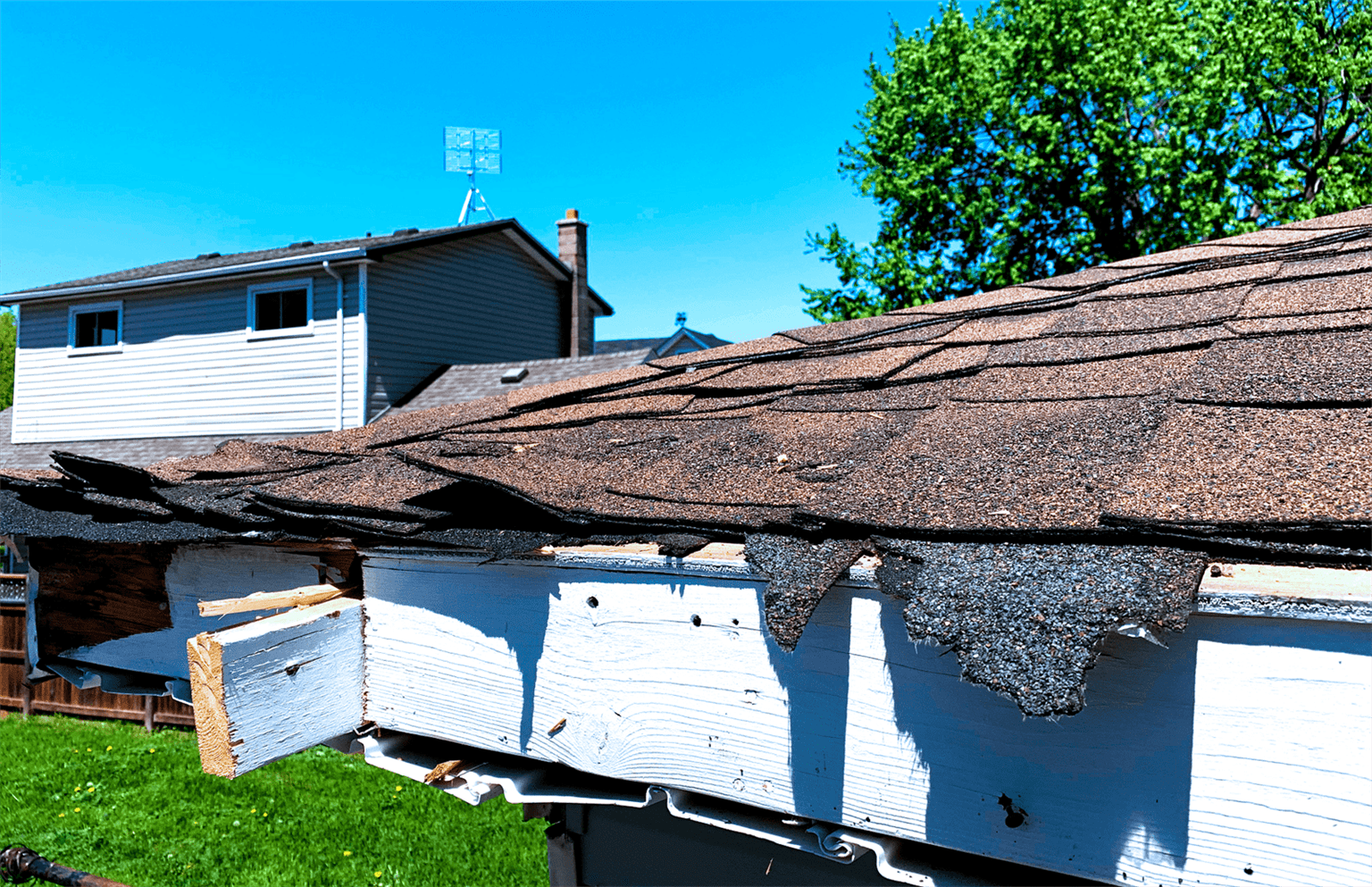8 Common Roofing Issues to Watch Before You Make a New Investment

When you’re investing in real estate, you don’t want to be sidelined by a major costly repair that eats into your profits. A complete roof replacement is one of the most expensive home repair costs you can encounter. The average roof replacement costs $5,750. That’s a big expense towards something you invested in for passive income!
Still, even the best properties will need roof repairs. Homes are due for a roof replacement every 20 to 30 years. You’ll need to budget wisely for any upcoming repairs you might face.
While you can’t always predict your roofing needs, you can visually inspect for any potential roofing issues. Also, ask the right questions to your home inspector when considering a property. Below are some of the most common roofing concerns, and what you can look for when inspecting a potential investment.
But first, if you are already pre-approved with a lender it may be worth your time to learn which types of roofing issues they may consider to be deal breakers for a property. That way, you do not wind up making an offer on a property only for the lender to pull support due to roofing issues or other concerns.
To learn more about lender policies and how to ensure that you are buying properties lenders would want to finance, click the link below for a free strategy call today.
Leaks
A leak is the most common roofing issue property owners face. Leaks occur when roof flashing or shingles or tiles tear, allowing water to enter. Tears or cracks occur for a variety of reasons related to weather, age of the materials, quality of the materials and installation. Water commonly enters the roof in these areas:
- Under torn shingles;
- Near the chimney, skylights, vents and pipes;
- Around gutters;
- In low spots.
You can spot a leak while inside if you notice discoloured ceilings or damp walls. Although the roof could still be leaking even if these symptoms don’t appear.
Pooled water on the roof
Water from rain or snowfall should drain or evaporate from the roof within 24 hours. Pooled water will lead to long-term damage by collecting dirt, encouraging plant and bacteria growth, deteriorating roofing materials and ultimately sagging the roof. Flat roofs should have tapered areas that allow water to drain from the area uninhibitedly. If you notice pooled water, roof repairs may be in your future.
Blistering Shingles
Blistering occurs when water is trapped in the shingle. When a roof is heated the water is heated, causing a blister to form. When the blisters pop, the asphalt loses a layer of protection and is prone to further damage. Blisters, cracks and ridges are especially likely in built-up roofs, roofs composed of several layers over a relatively flat surface. When examining a roof, a blister is not necessarily an urgent roofing issue but is something to watch.
Discover Residential Property Management With This Step By Step Guide
Clogged gutters
If gutters are poorly maintained, clogged or cracked, they aren’t allowing water to properly drain from the roof. If water backs up onto the roof it can cause many of the roofing issues listed above, or seep into the eaves causing them to rot. Installing screens are an easy fix to prevent leaves or other debris from clogging the gutters. Look for buckling, cracked or otherwise damaged gutters when inspecting a property.
Snow and ice damage
Just as heat can cause damage, so can snow and ice. When the snow melts, it becomes a lot of water for your roof to handle. If that water freezes before it has a chance to drain or evaporate, the water that seeped under the shingles becomes ice pushing on the shingles. Pressure on the shingles can create even more space for leaks. A roof inspection when evaluating your prospective property should look for any snow or ice damage from the previous winter.
Tree damage
If a tree is overgrown, it can slowly cause roof damage by scratching and eroding the surface. Trees should be trimmed so branches aren’t hitting the roof. You may also consider removing the tree altogether to avoid any catastrophic damage during a storm.
Animal damage
Trees are also a vehicle for critters to climb up and wreak havoc on your roof or attic. Squirrels, mice, rats, raccoons, birds and bats are common roof pests. Small animals will try to burrow or nest in your roof, causing damage. If you hear or see scurrying above while you’re walking through a house, investigate any potential damage.
Poor roof installation and maintenance
If a previous owner chose a sub-par roofing company for installation or maintenance, you could be the one who ends up paying for the roofing issues. If the previous owner ignored warning signs and didn’t conduct regular maintenance, like gutter cleanings and visual inspections, the problems could end up far worse for you.
Ask the previous owner as many questions as you can about the roof’s history. How old is the roof? What are the roof’s materials? Which contractors provided services? Are there any existing concerns? The homeowner may not be forthcoming, but asking questions is always a good start.
Before you buy an investment property, always do a thorough inspection of the roof. If you have any concerns, employ a trusted roofing professional to give their opinion. Not all of the roofing issues listed above are a reason to avoid buying a property. You should factor any potential costs when determining your overall investment range. Information is your best investing tool!
Finally, if you are worried that any of these roofing issues may impact your ability to secure financing on a property, click the link below for a free strategy call to discuss lender policies and financing options for distressed properties.
